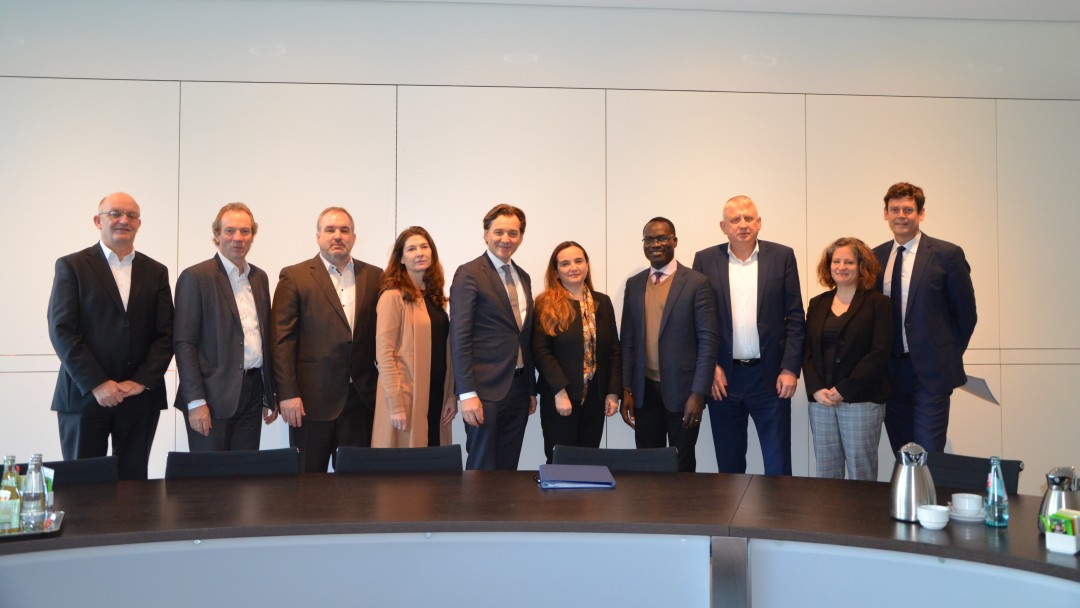News from 2019-12-17 / KfW Development Bank
KfW to support projects in cooperation with the International Union for Conservation of Nature

Two financing agreements with the International Union for Conservation of Nature and Natural Resources (IUCN) were concluded in Frankfurt on 17 December 2019. On behalf of the Federal Ministry for Economic Cooperation and Development (BMZ), KfW Development Bank is promoting two projects in Latin America and Southern Africa with EUR 18.9 million and EUR 12 million respectively.
The IUCN (International Union for Conservation of Nature and Natural Resources) is the world’s largest international environmental organisation. The IUCN network is made up of 89 countries, 129 governmental bodies, over 1,100 non-governmental organisations and currently over 10,000 experts and scientists from over 170 countries. Its goals include raising awareness of conservation and wildlife conservation. The organisation has many years of extensive expertise in international wildlife conservation and the development of national and international strategies for protecting biodiversity. The IUCN also has experience in implementing and managing donor-financed investment projects. The IUCN also compiles the Red List of Threatened Species and categorises protected areas using the World Commission on Protected Areas. KfW Development Bank and the IUCN are linked by many years of cooperation, primarily in Asia, Central America and Southern and Western Africa, and their relationship was further strengthened in 2016 when they signed a memorandum of understanding.
Network of priority eco-systems in Central America
From the Selva Maya in the border zones between Mexico, Belize and Guatemala all the way to Darién in Panama, Central America is home to eco-systems of extraordinary economical, ecological and cultural value. These are heavily impacted by ongoing human interference and the effects of climate change with some of them at risk of even disappearing completely. The resulting loss of biodiversity as well as the water shortage issues mainly affect the poorer population, whose livelihoods are particularly dependent on eco-systems.
The biodiversity programme for creating a network of priority eco-systems in Central America aims to support the eight member states of the Central American Integration System (SICA) in stemming the fragmentation of their eco-systems and promoting the sustainable cultivation of their landscapes. Measures to support the adjustment to and reduction of the effects of climate change will also improve living conditions for the region’s 47 million or so inhabitants. One of the central objectives is to preserve eco-systems that are still healthy and regulate their use as well as restoring degraded systems. The overall goal? To bring together both systems as a natural landscape.
Specifically, this means introducing measures to fight forest fires, to spread the use innovative monitoring technology, to set up monitoring centres, to restore rural productive landscapes, and to promote participation of indigenous and local communities based on recognised rights.
Facility for trans-frontier conservation areas in Southern Africa
The 16 countries of the SADC region in Southern Africa are also home to an extraordinary wealth of natural resources, species, and aquatic and terrestrial habitats and eco-systems. On the one hand, they provide a source of livelihood for a rural population suffering from poverty and a lack of opportunities for development. On the other hand, the region’s rich nature, wildlife and culture also form the basis for a regional and international tourist industry, some areas of which are already well established and growing strongly (tourist hotspots like the Okavango Delta, Victoria Falls, parks in Namibia, Botswana and Zimbabwe) while others require a great deal of development (particularly Angola and Zambia). At the moment, the region contains a total of 17 terrestrial and one marine trans-frontier conservation areas, covering 43% of terrestrial conservation areas and home to countless world heritage sites.
The goal of the project is to use the facility as a new regional financing mechanism to contribute to the sustainable protection of biodiversity and to the socio-economic development of neighbouring areas by promoting trans-frontier conservation areas in the SADC region. A (fund) structure for the flexible, incentive-based financing of measures is due to be set up for this purpose. The project is designed as an open programme, which is open to a broad group of potential applicants who wish to receive grants for eligible measures. Involving the local population, these measures will aim, for example, to develop and expand infrastructure in conservation areas and wildlife corridors, strengthen park management, promote tourism, combat poaching and human-animal conflicts, secure income and employment, and food supply.

Share page
To share the content of this page with your network, click on one of the icons below.
Note on data protection: When you share content, your personal data is transferred to the selected network.
Data protection
Alternatively, you can also copy the short link: https://www.kfw-entwicklungsbank.de/s/enzBWrMC.CILB
Copy link Link copied